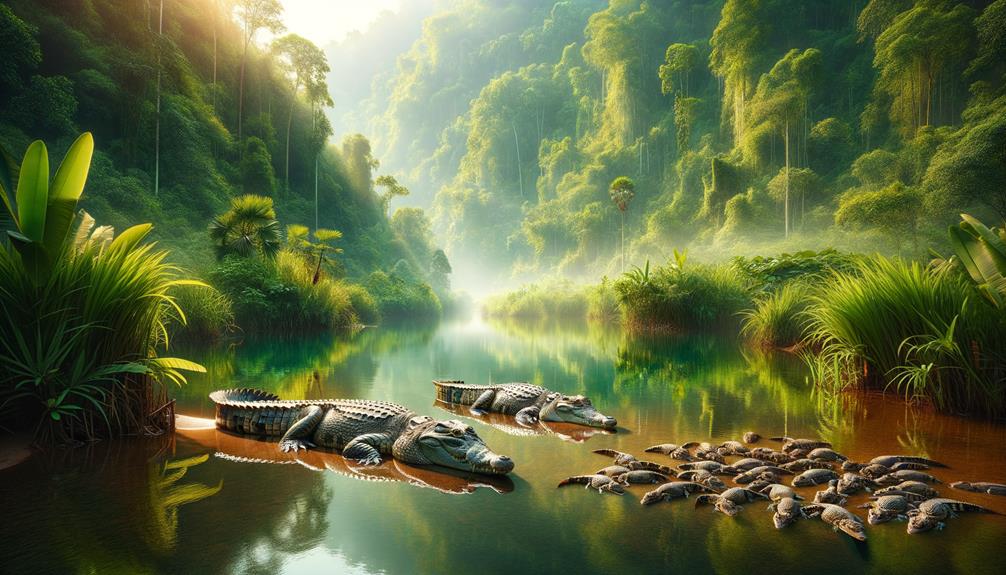Protecting the Komodo dragon's habitat, limited to five small Indonesian islands, is crucial for the species' survival. The 173,300-hectare Komodo National Park provides a vital sanctuary, but it's under threat from deforestation, poaching, climate change, and human-wildlife conflicts. To combat these issues, we're utilizing technology like drones and SMART systems to monitor and address these threats. Community involvement and responsible ecotourism management are also key components of our conservation strategy. This includes regular patrols, monitoring prey populations, and anti-poaching initiatives. Genetic research also plays a critical role in informing targeted conservation efforts. The protection of these habitats is vital for the long-term survival of this unique species, found nowhere else on Earth.
Key Takeaways
Komodo National Park's vast 173,300 hectares serve as a vital refuge for Komodo dragons. To combat the threat of illegal activities, anti-poaching initiatives and habitat patrols are in place. The park's ecotourism management strategy includes limiting visitor numbers, designating viewing platforms, and enforcing strict guidelines to minimize disruptions. Advanced technologies, such as drones and satellite imagery, are used to monitor and surveil habitat encroachment. By involving local communities in patrols and alternative livestock management, human-wildlife conflicts and habitat destruction are reduced.
Importance of Habitat Protection
Protecting the habitat of Komodo dragons is crucial because these unique reptiles are confined to just five small Indonesian islands, making their survival heavily dependent on the preservation of these limited areas. The Komodo National Park plays a vital role in this effort, covering over 173,300 hectares and offering a sanctuary for these remarkable creatures. Without the park's protection, the Komodo dragon population has declined significantly over the past three decades, highlighting the importance of this protected area.
The park's designation as a UNESCO World Heritage Site in 1991 recognizes its exceptional natural value and global recognition of its importance. The islands within the park are the last remaining habitats for dragon conservation. By preserving these habitats, we ensure the survival of a species found nowhere else on Earth. Human activities outside the park pose significant threats, making the role of the Komodo National Park even more critical.
In essence, continued protection of the Komodo National Park is not just about preserving a species, but also about maintaining the ecological balance of these islands. This proactive step ensures that future generations can witness the majesty of Komodo dragons.
Threats to Komodo Dragons
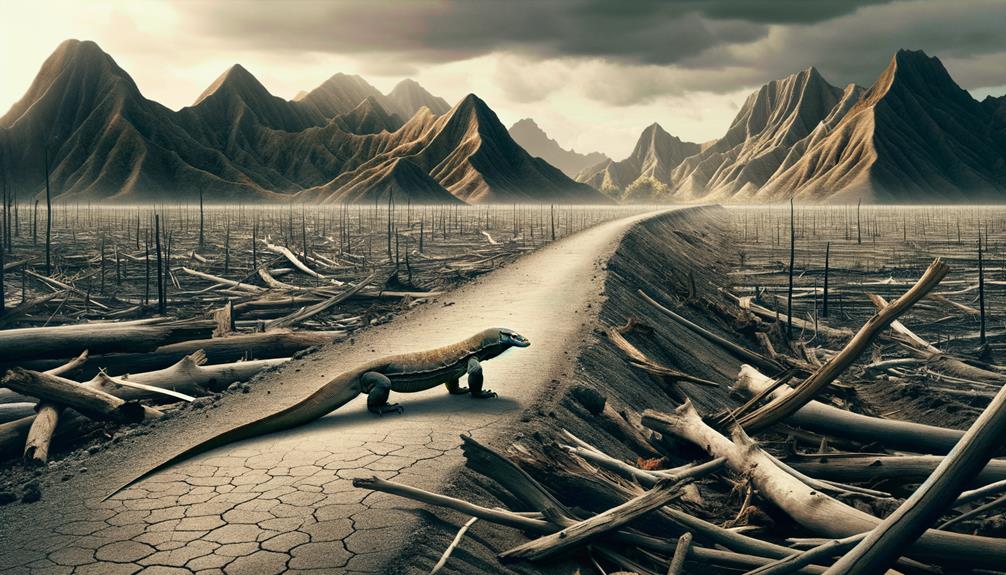
Komodo dragons face numerous threats outside the protective boundaries of Komodo National Park. Deforestation, development, and agricultural expansion lead to habitat loss, which reduces their population size and makes conservation efforts more challenging. Poaching and hunting further deplete their numbers, with illegal activities targeting not only the dragons but also their prey species, like deer, which are crucial for their survival.
Climate change exacerbates these issues, as rising sea levels and prolonged droughts threaten the dragons' limited island habitats. The dragons' ability to adapt to environmental changes is stretched thin, making them vulnerable. Human-wildlife conflicts also play a role, as local communities often retaliate against Komodo dragons when they attack livestock, leading to additional killings.
Feral dogs, an invasive species, pose a significant risk to Komodo dragons. These predators prey on dragon eggs and hatchlings, reducing the chances of young dragons reaching maturity. Collectively, these threats have contributed to the Komodo dragon's vulnerable status on the IUCN Red List, highlighting the urgent need for extensive measures to protect their declining population and secure their future.
Conservation Strategies
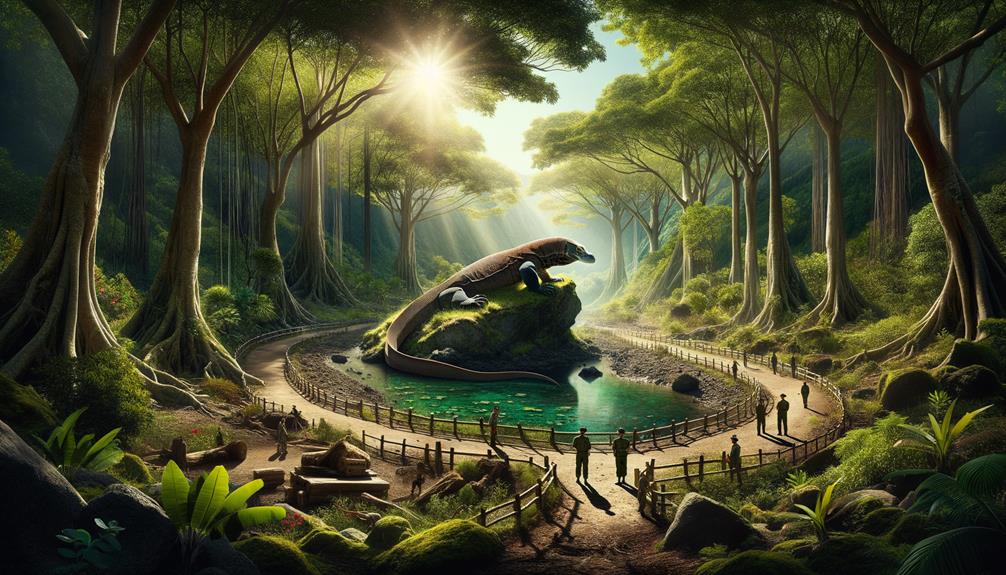
To safeguard the Komodo dragon's dwindling population, conservation efforts require a multifaceted approach that includes habitat protection, community involvement, and scientific research. Komodo National Park, spanning 173,300 hectares, plays a vital role in this endeavor. Established in 1980 and later designated a UNESCO World Heritage Site, the park provides a haven for the world's largest living lizards. However, conservation efforts must extend beyond the park's boundaries.
The Komodo Survival Program collaborates closely with local communities to implement several critical measures. Habitat patrols are crucial for mitigating human activities that threaten the dragons' ecosystem, such as illegal logging and poaching. Prey monitoring ensures a stable food source for the Komodo dragons, which is vital for their survival. Anti-poaching initiatives protect not just the Komodo dragons but also other wildlife within their habitat.
Genetic research has refined our understanding of the Komodo dragon population structure, guiding targeted conservation management strategies. Despite these efforts, less than 15% of the Komodo dragon's habitat in Flores is protected, leaving the population vulnerable to external threats. A comprehensive approach that combines habitat protection with scientific insight and community cooperation is vital for the dragons' long-term survival.
Role of Technology
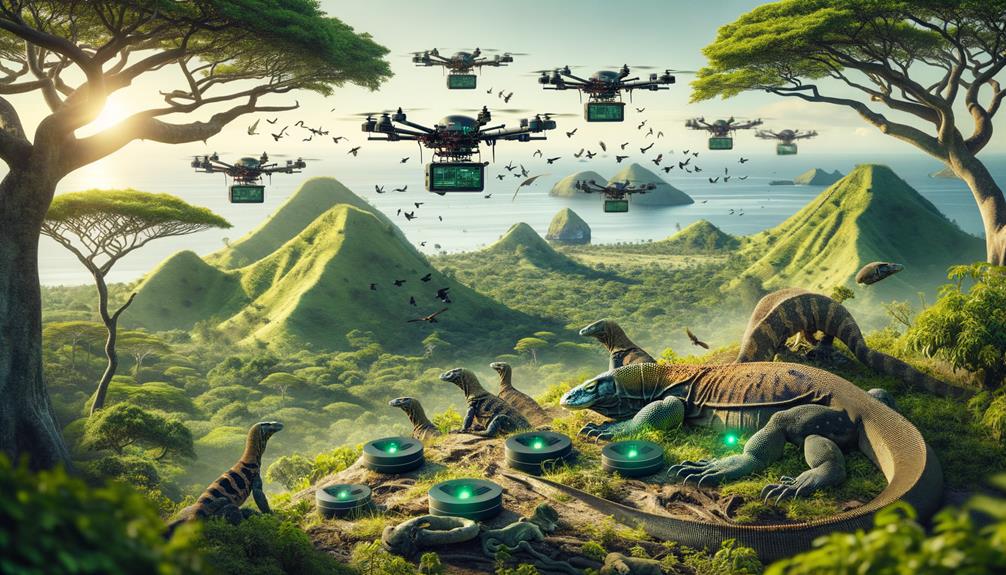
Advancements in technology have changed the way we protect Komodo dragon habitats. We now have precise tools like SMART technology, drones, and satellite imagery to combat threats and enhance conservation efforts. In Komodo National Park, SMART technology has improved security and surveillance by collecting and analyzing data from patrols and camera traps. This enables us to respond quickly to threats.
Drones play a crucial role in tracking Komodo dragon populations and observing their habitat from the air. They provide high-resolution images, allowing researchers to conduct detailed analyses without disturbing the animals. Satellite imagery offers a broader view, detecting illegal activities like poaching and habitat encroachment. This real-time data helps us respond promptly and effectively.
The Komodo Survival Program uses geospatial mapping and data analysis tools to develop targeted conservation strategies. By understanding where threats are most concentrated, we can focus our efforts and allocate resources more efficiently. These technologies combined provide a robust framework for protecting Komodo dragons, ensuring their habitats remain secure and their populations thrive. Through continued innovation, we can safeguard these majestic creatures for generations to come.
Community Involvement
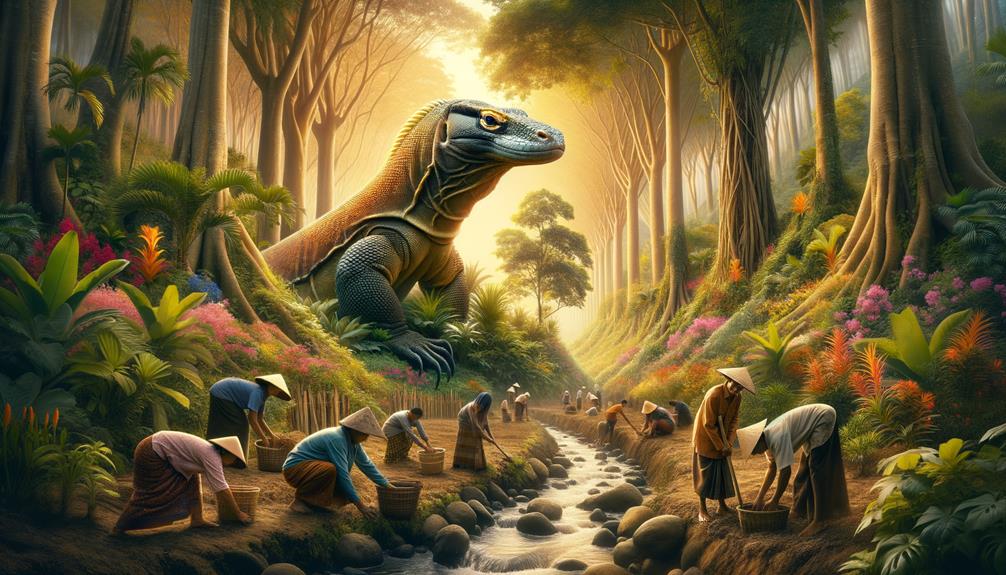
Community involvement is crucial to the conservation of Komodo dragon habitats. Local stakeholders participate in training programs, habitat patrols, and alternative livestock management practices to reduce human-wildlife conflict. The Komodo Survival Program works closely with local communities, enabling their active participation in these vital conservation efforts.
By engaging local people, several benefits emerge. Local staff develop skills in monitoring and research activities, ensuring sustainable conservation efforts. Community members regularly patrol the habitats, preventing illegal activities that threaten the Komodo dragons. Implementing alternative livestock management practices reduces human-wildlife conflict, fostering a harmonious coexistence.
The Taronga Conservation Society's partnership with the Komodo Survival Program amplifies these community conservation programs. This collaboration expands efforts to protect the Komodo dragon's habitat and promotes long-term sustainability. Engaging local communities not only aids in conservation but also improves their livelihoods and fosters a sense of ownership over their natural resources. This approach ensures that conservation efforts are deeply rooted in the community, leading to more effective and enduring outcomes.
Future of Komodo Dragons
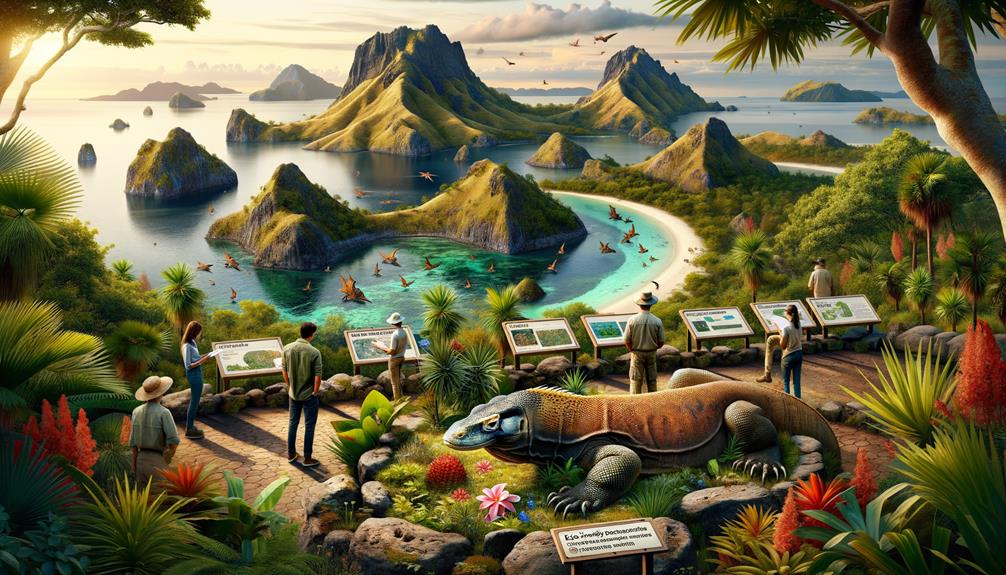
Safeguarding the future of Komodo dragons requires addressing the pressing threats of climate change, habitat loss, and human encroachment with robust and scientifically-informed conservation strategies. Komodo National Park, which is home to over 80% of the Komodo dragon population, plays a crucial role in these efforts. However, habitat fragmentation and deforestation, especially in Flores, present significant risks to their survival.
To mitigate these risks, conservation efforts must be multifaceted. Expanding protected areas and strengthening law enforcement are critical steps. Anti-poaching patrols and community engagement initiatives can help curb illegal activities and foster local stewardship. Captive breeding programs also offer a safety net, ensuring genetic diversity and population stability.
Eco-friendly tourism practices can also support conservation efforts. By promoting responsible travel, we can minimize human impact while generating funds for conservation. It's essential that tourists understand the importance of respecting these habitats, ensuring that their visits don't contribute to further degradation.
Ongoing research is vital to understanding the ecological needs of the Komodo dragon. This knowledge can inform targeted conservation strategies. The future of these magnificent creatures depends on our commitment to preserving their natural habitat and implementing science-based policies that balance human interests with ecological integrity.
Frequently Asked Questions
How Are Komodo Dragons Being Protected?
Komodo dragons are safeguarded through a range of conservation efforts. The Komodo Survival Program monitors their habitat, while advanced security measures, including SMART technology, help deter threats like poaching. Regular population surveys also ensure the dragons' numbers are tracked and their survival is secured.
What Do Komodo Dragons Need in Their Habitat?
Komodo dragons require specific conditions in their habitat to thrive. They need tropical savanna forests with abundant prey like deer and pigs, access to water sources, and loose soil for nesting. It's a very specific environment that meets their unique needs.
How Do You Protect Yourself From a Komodo Dragon?
To protect myself from a Komodo dragon, I'd keep a safe distance, avoid sudden movements, and never turn my back. If threatened, I'd quickly climb a tree or use a stick to fend it off.
What Are Komodo Dragons Habitat Adaptations?
Komodo dragons are masters of survival in their tropical savanna habitats. They regulate their body temperature by seeking shade or basking in the sun, and their powerful limbs help them navigate rocky terrain. With keen senses and efficient digestion, they thrive in an environment where prey availability can be unpredictable.



